The definition of Art listed on Wikipedia is; "a diverse range of human activities in creating visual, auditory or performing artifacts – artworks, expressing the author's imaginative or technical skill, intended to be appreciated for their beauty or emotional power."
A personal favorite artist is Imogen Heap. Both for her fearless and uncompromising creative spirit, and for the way she expresses herself in such a wide variety of mediums, including technology products. Over the last years she has applied her imagination to assisting in the development of the mi.mu glove controller, employed cutting edge social media to get her message out, and become a driving force behind Mycelia, a foundation to set the standards for a fair trade music industry and to help bring to life a global music database.
One of her recent expressions takes the form of Box of Tricks, a Kontakt-based sound library that she put together with the folks from Soniccouture.
How did this project come about?
Box of Tricks

Initially the idea for some kind of Imogen Heap instrument came from me. I suggested that we do a small free giveaway thing. Imogen got in touch later, and proposed doing a full instrument. When I visited her studio and saw all the instruments it fell into place what we should do – a collection.
I became a big Soniccouture fan after I was first introduced to their work by Guy Sigsworth from Frou Frou. I think they make stunningly beautiful instruments.
James Thompson and I met up in London after a few emails over 18 months. They'd reached out to me to work with me, but I had too much going on at the time. I emailed them back when it came to getting ready to go on tour to see about making something together.
When I'm in the studio I have a varied collection of tuned percussion that people may recognize in my music. I had been in touch with Leafcutter John for the Reverb Festival as I wanted to have a set of creatures, (as we call them), made up of a selection of percussive sound making objects, mechanically playing them via MIDI triggers. Things like a massive kick drum or my favorite little hi-hat or snare, some maracas and some odd things from my childhood that make nice noises, and he built frames to house them in and put them together as a set of creatures. They've got little LED lights and they sound great and became part of my band.
However.. not totally practical for smaller shows as they're delicate. So I thought this could be a good basis for what we may use in our instrument.
I also wanted to have my Whirly Tubes whizzing around and have lights on the end of them, and be at the center of the stage. The harder you pressed on your keyboard, the faster the whirlies would spin, so you'd get the harmonics out of them. I could play pitch with the up and down motion of the gloves and play the harmonics with the 'roll' axis. Really though... that would have been a nightmare to carry about and assemble on tour so thought... wouldn't it simply be great to just play these sounds too via a sample set.
These for me were the beginnings of what became The Box Of Tricks and through further talks with James and meet ups at my studio, we decided upon what we have now. Took me a while to agree on the vocal pads but then just let it go, coz well... why not!?
How did you come to acquire all these unusual instruments?
Most of them are actually given to me. Everyone goes "oh what do I get Imogen for Christmas?" And all of my family goes "let's give her an instrument!" So I've got a lot of strange things over the years from people, and some of them I really love and use lots, and some of them I like the look of and I've never touched. For instance, the tongue drum we sampled, that's from Guy Sigsworth. The Array MBira is maybe the nicest story.
That's like a massive thumb piano, right?
Amazing MBira

It IS exactly a massive thumb piano! We sampled this twice, because Imogen felt the first recording we made didn't really capture it well enough. We went into The Pool studio in July to re-do it.
Yea, it is. I went around to a friend of mine called Mileece. She's an amazing musician that makes music with plants. She puts electromagnetic little pads on the leaves and you can hear the plants react to people and the environment around them. So you walk around these gorgeous installations (often bare foot) and the plants come to sing all around you.
So for a while she lived in London where she had this great flat and I went up to visit her. Placed on the floor there was this little MBira that I guess she'd been just playing. I was just transfixed by this creature. It was just the most beautiful sounding thing I think I had never heard and so inviting to play. It was invented by the wonderfully eccentric Bill Wesley at Array Instruments in San Diego, CA." The MBira is an array system—going up in fifths, down in fourths—which makes it such a joy to play. They are hand crafted and sold to people who are happy to pay for the real deal because they are absolutely worth it.
When I went on my next tour he met me in San Diego and brought me one and said: "I love your music and I think that you should have this." And he gave me this treasure for which I am forever grateful. It was one of the first he'd ever made and that's the one that we sampled (I have since bought another as a backup for touring). It was important for me to attempt at replicating some part of the fun playability of the MBira—as what makes it distinctive is to be able to play five octaves with one finger—descending, cascading octaves. You have the western twelve notes scale, but it goes up in fifths around the harmonic scale and each note has its corresponding octaves. There are notes that's repeat so your right hand and your left hand can play exactly the same notes and therefore you can achieve this really nice stereo feel when you play it. There's just nothing else like it (well apart from his nail violin but I don't use that half as much). So yea, that was really important for me, to get that in Box of Tricks.
And the Shruti box we sampled was given to me by my mom. It's an Indian instrument with valves you open and close with your fingers manually while playing. It's intended as a drone instrument though so once set, off you go in that key. It's twelve notes, so only one octave. You use it like a harmonium, pushing the bellows with your hand, and gives it a feeling of breathing. With Box Of Tricks, you'll see a control called 'Pressure, ' and you can change the drift of that pressure and how fast it happens. Again, it goes beyond the actual instrument because, when you play the real thing you can only move as fast as the Shruti box, and what happens is, if you press really hard, it makes the pitch sharp, so you can only do it at a certain speed.
What inspired you to include your percussive vocals?

For our part, we felt we couldn't release this product without some Imogen vocals in it, but we certainly didn't want it to be a 'Heap song construction kit' or anything naff like that, so the single vocal notes worked well as an instrument in their own right. The vocal percussion I felt was a match made in heaven – when Imogen suggested it I knew I'd be able to make a great kit from it, as I have spent a lot of time creating similar samples for the Sonicouture Konkrete series.
Just talking through ideas and James saying: "It'll be really amazing to get the vocal percussions and vocal pads in there." And in the beginning I was a little like "oh, I don't know if I want to do that. You know, that's my voice. That's who I am." But then I thought, actually for my own use, I could really use this to bed into other parts and thought likely that's how others would use them rather than a featured vocal.
I've used it already on stage and I've used it in a song, which is called Tiny Human which is online. If you listen to the middle section of that song, you hear some vocal chords, and that's using the Box Of Tricks. I'd been working a lot on it when I made "Tiny Human" because I was going through the instruments with him and building it and making it playable.
So we worked on a lot of the different features together while I was doing that. I'm a big fan of killings birds with one stone.
There are a lot of percussion toys around your studio. Some of them are your classic tricks. Can you speak to that?
Things that go whisk in the night...

The Whirly Tubes were very difficult to record, due to the huge diameter of the arc when being swung. Mics were placed in all four corners of the studio, and Imogen was very pregnant at the time, but she was adamant she wanted to swing them herself.
I have my studio in my basement and when I make record I'm just down there in my own little world. When I need a bit of a break, I come up and make myself a cup of tea, and then I would wander down with a whisk or some wine glasses sometimes. I have these two whisks that make a really nice sound when you swipe them fast past your ear. I was trying to find a kind of whishy sound for this song called Between Sheets, which is on an album called Ellipse. The whisks usually end up as a nice percussive thing that's not like a high hat, but that kind of speed. In a song First Train Home, the intro is a set of my kitchen wine glasses. I do take down various pots and pans as well.
When I did this crowd-sourced song called Lifeline I asked my fans to send in sounds. Anything from a car door shutting to the London underground tube going through a tunnel to a dishwasher door opening. And then with all of those sounds, I pieced together a song. One of the sounds that people sent in was this sound of water in a bowl—so if you have a metal bowl and you put some water in it and then you clank it, it makes a nice sound. So that's the beginning Lifeline.
And so things like that would just kind of inspire me to go down and create a piece of music.
Let's talk a little more about the Whirly Tubes, which are such an important part of your live show.
Whirly Tubes in repose...

We have had a version of the KSP Jammer script for years in some of our instrument, but working with Imogen meant we incorporated her ideas and ended up having to build a completely new version which could do proper DAW sync and swing and a few other functions she wanted – and this has now taken it to a new level and it's a really creative tool.
I've got a whole set of them, made by somebody in New Zealand. Because they are very long, so you can only play one or two at a time. The longest one is maybe about eight feet long. I really, really love the sound of them so I use them a lot in songs. I used them in 2-1 and Neglected Space. I like whacking a massive reverb on them and then reversing them. Another favourite go-to trick.
It's quite difficult to play an eight-foot long whirly tube in my studio because it just hits everything (laughs). I wanted to be able to play it as a keyboard sound, as a pad, because the longer they are, the deeper the note and the wider the harmonics that it finds are. The speed of the spinning rotation is what changes the harmonic note that it's playing, according to its fundamental. That sound is really nice when you play it because you've got all of these different beats within one sample, so Sonnicouture did a top job of looping them nicely. Adding to this, things you could never do, like putting them into the Jammer, and adding harmonies. So you've got endless possibilities and it's so much fun to play with.
That's actually a nice segue to my next question about your use of arpeggio patterns. What is it about the Box of Tricks Jammer that particularly appeals to you?
I know that sounds ridiculous, but I have never actually used an arpeggiator. I for some reason, painstakingly go in and I manually type it all in MIDI or process the pitches and put them in place on the timelime. I think the first arpeggio that I actually did use was for a song called Me the Machine. My dear friend Tim Exile who makes these great plugins for (Native Instruments) (the Mouth, the Finger and now Flesh) built me an arpeggio in Reaktor based on his flow machine, so I could play the arpeggio sound in Me the Machine live with the mi.mu gloves we were developing.
It was the guys at Sonicouture who came to me with it. They figured out one of my idiosyncrasies and presented me with the Jammer. And I was like "WOW, why haven't I done this before!". We worked a bit further on it, especially regarding how you could play it live, enabling you to store settings and set what lengths and rate and swing etc.
I just adore the Jammer and use it a lot in my live shows now as there are SO many Heap tracks with arpeggiated riffs in them.
Hence my confusion. How long was it between when you actually started playing and when the computer came into your life as a music tool?
At home we had a pianola. It reads music via punched holes on long rolls of paper and then played by the mechanism. Perhaps subconsciously I was being introduced to the idea of computer music—something that would play a code, a pattern, and it would regurgitate it without you having to play it. I played the piano, from as young as I can remember, and I knew pretty early on that I wanted to do music. Singing was never on the agenda but I did write songs for fun.
I studied further as I wanted to write music for orchestra so I began learning one instrument from each sections. The cello for strings, the clarinet for the woodwinds, and attempted the trumpet for brass but didn't' have the patience and gave up. One of my favourite instruments though.. specially when played by Arve Henriksen. I got a little keyboard that had crappy drums loops and things like that on it when I was about nine. You'd often see me recording into the tape to tape cassette player at home layering sounds, doing my awful version of beat box over it and then maybe playing the cello on top of that. I've always loved layering sounds. Building landscapes.
When I was twelve, I went boarding school and didn't exactly mesh with everyone so I hid away in the music school quite a lot. One of the rooms had an Atari computer in it with Notator on it (I think) which nobody knew how to use. There was a massive manual that I wrestled with a bit and started to build pieces up.
I was so captured by this computer as suddenly I could just play in what was in my head via a keyboard and hear what was in my head.. or get closer to it at least. To get anywhere near this before I'd have to wait to hear the school orchestra play a piece which happened once in a blue moon! It was so liberating, I was hooked from the beginning. I was making awful, cheesy, electronic sounding things via whatever sound module they had there. I can't remember now! It all seemed like magic.
What was the most enjoyable part of the development of this Box Of Tricks product for you?
I really enjoyed the physical playing of the sounds, especially the whirlies and all that in studio. Great fun! Also the hours on Skype with Dan Powell, who was piecing it together. We'd go through everything, talk about the articulations and playability of it, and if we wanted to change things. I loved that, because we'd go into all this detail and then he'd going to go do all of that stuff that was going to take weeks! Rather him than me for sure! There were so many different stages to it but when it came to the fine-tuning, that's when everything really started to come together. They've just done such a beautiful job with it. Total pros and a real joy to work with. I feel like I did the fun bits and they did all the hard work! I'm a lucky gal.
I'm really proud of it. It's really important to me to have a standard in everything I do, from my music, to the mi.mu gloves and now the Box of Tricks. I don't like to do things by halves and I think we've set the bar high with this one. That's why I went to SonicCouture because they're consistently good! However, in my wildest dreams, I didn't expect it to be like this. I'm so happy with it and really use it all the time. I've emailed all of my music friends and said, "Seriously guys, this is great. I'm not just saying this because I want you to buy it. I'm just saying it because it's really great and I think you're going to love it. " And the response has been ultra positive.
You were recently commissioned for the new Harry Potter Play. How did that come about?
I know the gang now through this guy called Steven Hoggett, who's the movement director. He and (Director) John Tiffany have worked many times over the years on different teams and together they make a fantastic team. It's such a pleasure to be a part of.
Sounds like he's one of the characters?
Yea, it does actually. Hoggett, Hogwarts. I worked with him in the past on this production called "Pool, No Water" which is a dance piece with spoken word. I had just finished Speak for Yourself and he got in touch with me. I reworked Speak for Yourself to work for the play.
For that job, I was doing it all remotely. The big difference now is I'm working in situ with the team and cast building the music in the room. Headphones on, watching stuff go on. Very inspiring. I've got my Box Of Tricks and I'm there in the back of the room kind of making music, and every now and then I'll grab an opportunity to get some feedback and play them something, or they'll ask me to do a certain section.
It's great to have all the team there, coming over and just kind of chipping in and listening and working with them. I haven't heard of it ever being done like that. It's going to be quite a bit of work. It comes out in June this year.
And have you written a score like this before?
I haven't done many things for film, but I always find it easier, because I'm got something to bounce off. If I see a visual and I write a piece of music to it, it's like the music sticks to it, almost affirming in a kind of a third language. This music and film, it fits like a glove. There's a sense of "that works" because they dance together.
My biggest one was this very odd one called Seashell and the Clergymen. It was the first ever surrealist movie made in 1912 by Germaine Dulac, a female director. I did a 30-minute acapella vocal score for it. Because I could see the movement on the screen I wrote it really, really quickly. But hardly anyone's heard that piece because it was just this kind of random live performance that I sang with a choir.
Do you think you'll ever work with Guy Sigsworth again?
Yea, absolutely. We meet up and we both know that we want to do something together but we're both just really busy. We both know it's going to take a long time, because it always does with us, so don't' want to rush it. At the moment—especially that I've got my little girl in my life—time is not so easy to come. So we haven't directly talked about when, but we both do want to do something together. We missed our 10th anniversary of Frou Frou, but hopefully it'll be before our 20th.
Will you tour anytime soon?
Nothing in the cards, because the Harry Potter thing is taking me until August of next year and I want to focus on Mycelia, a foundation to set the standards for a fair trade music industry and to help bring to life a global music database. That's my burning passion at the moment! There's a hack weekend 1-3rd April at Sonos Studios in Shoreditch if anyone fancies joining in. Please email us at Mycelia@imogenheap.com.
That's royalties and things related to Spotify and Pandora?
It is and much much more. It's about turning music industry onto its feet, because it's always been lopsided. Artist's consistently at the end of the food chain. Technology has grown and changed over the years, taking music and it's distribution with it. These systems are being built on top of systems on top of systems, and now there's too much complexity and opacity. It's almost impossible to find basic information, and it really inhibits a artist's ability to get the most out of their work, whether it's on the radio or someone wanting to use it for a dance piece or where do people get permissions or who's playing the guitar? This information exists in some form yet there's no open way to search this. We need a semantic music web to piece them all together, to help the flow of information and to empower the artists to build a sustainable industry for themselves to work in.
It might be that I want everyone over 60 to have my music for free, or anyone under but at the moment there's no way for me to offer that on a global scale. If you imagined a way where the music and all the video and lyrics and artwork and all the metadata information—all of this stuff would go up on some kind of portal that would then be connected by tags onto the block chain, and then people would interact with it directly or through a mushroom, as I call them, which is kind of a service you'd see today like iTunes or whatever.
Imagine if instead of each song, instead of being uploaded to each service independently multiple times, to have one official source that all services point to. Here the latest biog, image, song info, inspiration, musicians used, engineer, studio etc would then be available automatically. The verified, authenticated official version of that song or its metadata. Each song acts as a beacon, become available to services looking for new music or data to build their platform from.
So, imagine a Spotify of the future, instead of the subscription fees going to many different and (in this digital data day and age) unnecessary intermediaries, goes direct to the song's address and distributes payments accordingly to the various bodies involved in the making of that music with a percentage gone to the curator/platform. A percentage going to the fans that are hosting that music. Imagine as an artist, having the lifeblood information of actually seeing where in the world that music was being streamed from in real-time. We could build tours of that stuff or thank the Dj that played the song with an app (I'd quite like to make myself) called Thank the DJ, as the app has given you the direct line to the radio station. You could share the inspiration of that song... or suggest a meet up/ pop up concert locally if you happened to be in the area! It's all about connecting the dots. Or having information on that song for all to see should they wish to license if for a film, cutting out sometimes months of people's time trying to trace ownership of a song, or getting permission... by which time you've missed the boat.
Where can one learn more about it?
Any day now we're putting up a holding page at Imogenheap.com/Mycelia until we get something more flashy. Info of the hack weekend coming up 1-3rd April at Sonos Studios in London will be there and you can add yourself to the mailing list. There's so much incredible stuff out there and Mycelia is managing to be a happy bridge between much of the new music tech. Ultimately services need the artists for their businesses to run, so it's makes complete sense to let us in on helping build an environment that works for us. It's just not sustainable at present. We need a protective home, a collective voice. A place to share ideas and grow the technology together to help people do business with us in the most effective, efficient and fair way as possible.
No shortage of ideas and energy in this woman...
The present and future
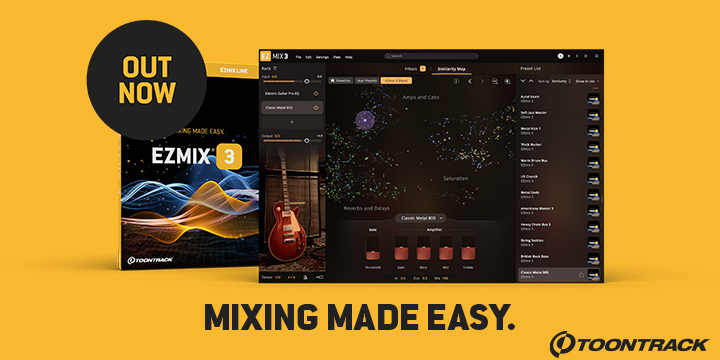

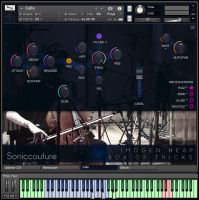
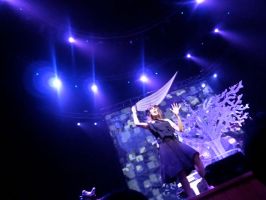
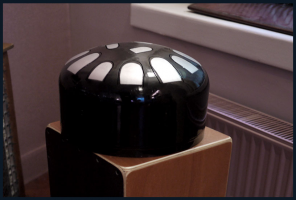
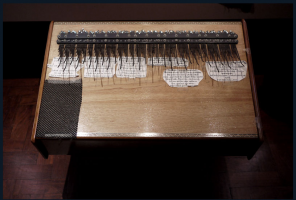
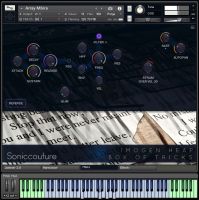

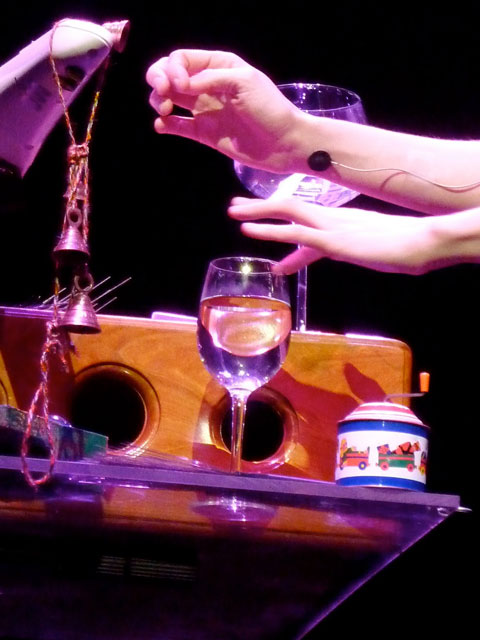
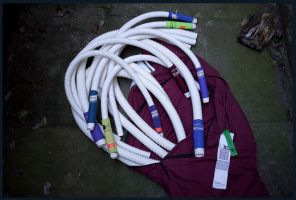


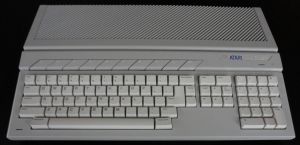
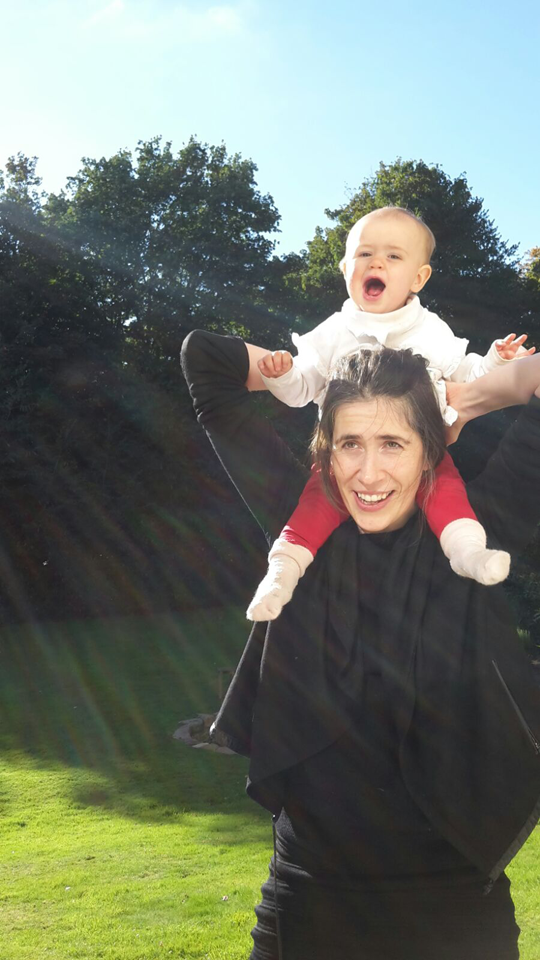
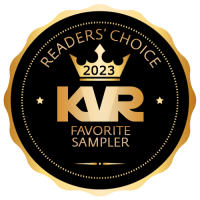

 Other Related News
Other Related News